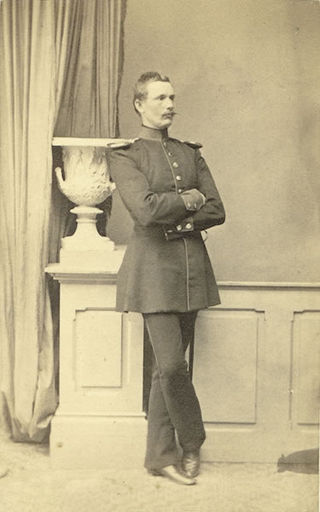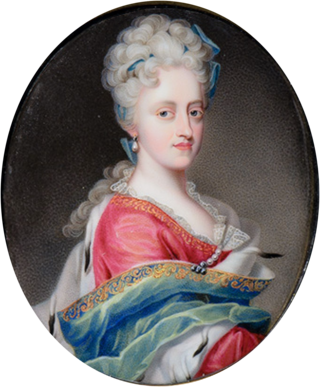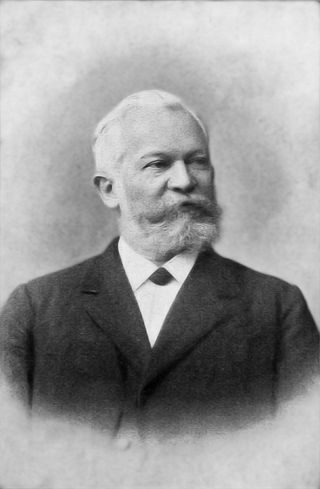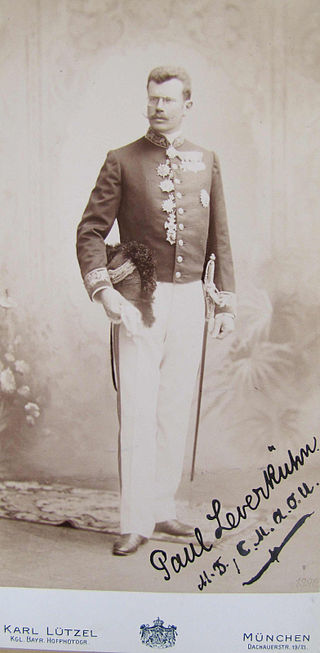
Eugen Ferdinand von Homeyer (11 November 1809 in Nerdin - 31 May 1889 in Stolp) was a German ornithologist. He made early studies of the birds of Pomerania, making collections, and was a staunch anti-Darwinian.

Eugen Ferdinand von Homeyer (11 November 1809 in Nerdin - 31 May 1889 in Stolp) was a German ornithologist. He made early studies of the birds of Pomerania, making collections, and was a staunch anti-Darwinian.

Eugen Ferdinand von Homeyer was born in a family belonging to the Prussian nobility. He at first dedicated himself to agriculture on the family farm, with poor health forcing him to drop out of school in Rostock. While on his farm, he began to make scientific observations and establish a collection. In 1840 he married Philippine Ladewig and acquired in 1852 the property Warbelow where he built a landscape park. He sold this after the death of its wife in 1873 and then lived in Stolp, where he dedicated himself to the natural sciences and ornithology. He corresponded with many European ornithologists, and through further collecting and purchase built up an important collection of European bird species. He undertook several expeditions with Alfred Brehm to the Lower Danube. This was made possible through his acquaintance with the Crown Prince Rudolf of Austria. Homeyer was against the ideas of Charles Darwin and was a firm follower of Georges Cuvier's idea that species were created periodically and some destroyed in catastrophes. From 1883 he began to violently dispute the ideas of others and earned disrepute for his frequent polemics. [1] [2] [3]
Homeyer was a founding member of the German Ornithological Society and from 1876 to 1883 their president. Homeyer died of a stroke and was buried at Warbelow. His collection of 20,000 bird specimens was transferred to the Braunschweig Natural History Museum. Eugen von Homeyer wrote over 150 articles on birds and was the first describer of the semi-collared flycatcher and the Cyprus wheatear. His cousin Alexander von Homeyer was also an ornithologist. [4] [5]

Johann Friedrich Naumann was a German scientist, engraver, and editor. He is regarded as the founder of scientific ornithology in Europe. He published The Natural History of German Birds (1820–1844) and The Eggs of German Birds (1818–1828). His father Johann Andreas Naumann (1744–1826) was a naturalist, and his brother Carl Andreas Naumann (1786–1854) was also an ornithologist.

Christian Ludwig Brehm was a German pastor and ornithologist. He was the father of the zoologist Alfred Brehm.

Johann Matthäus Bechstein was a German naturalist, forester, ornithologist, entomologist, and herpetologist. In Great Britain, he was known for his treatise on singing birds.

Ernst Johann Otto Hartert was a widely published German ornithologist.

Alexander von Homeyer was a German soldier and ornithologist. He was a cousin of Eugen Ferdinand von Homeyer, also an ornithologist.

Julius Duboc was a German author and philosopher.

Maria Magdalena of Austria was a governor of Tyrol and daughter of Leopold I, Holy Roman Emperor and his third wife Eleonor Magdalene of the Palatinate-Neuburg. She died unmarried.

August Wilhelm Heinrich Blasius was a German ornithologist.

Leopold Friedrich Günther von Goeckingk, also Göckingk was a Saxon-Prussian lyric poet, journalist, and royal Prussian official.

Karl Ferdinand Becker, was a German writer on music, composer and an organist.

Eberhard Fraas was a German scientist, geologist and paleontologist. He worked as a curator at the Stuttgarter Naturaliensammlung and discovered the dinosaurs of the Tendaguru formation in then German East Africa. The dinosaur Efraasia is named after him.
Johann Michael Seligmann (1720–1762) was a German artist and engraver best known for his ornithological artwork in Sammlung verschiedener ausländischer und seltener Vögel of 1749, which included plates based on the works of Mark Catesby and George Edwards. Seligmann received his initial training in engraving and art at the Nürnberger Malerakademie and some of his earlier works included the depictions of various rocks and minerals. His other works included the Opera Botanica 1754 written Konrad Gesner. Many of the copper plates that he made bear the initials JMS.

Eleanor of Austria, was an Austrian archduchess and a member of the House of Habsburg.
Victor Emil Gardthausen was a German ancient historian, palaeographer, librarian, and Professor from Leipzig University. He was author and co-author of some books; editor of ancient texts.
Johann Wolf was a German naturalist and ornithologist.

Paul Georg Heinrich Martin Reinhold Leverkühn was a German physician and ornithologist.
Ferdinand Carl Valentin Haecker was a German zoologist, reader at Freiburg University from 1892. In 1900, he became professor at the University of Applied Sciences Stuttgart and in 1909 at Martin Luther University of Halle-Wittenberg. He was president of the Deutsche Zoologische Gesellschaft from 1922. He died unexpectedly from a stroke.
Hartwig, Count of Stade and Archbishop of Bremen, son of Rudolf I, Margrave of the Nordmark, and Richardis, daughter of Hermann von Sponheim, Burgrave of Magdeburg.
Wilhelm Franz Josef Kosch was an Austrian historian of literature and theatre and lexicographer. The lexicon that he conceived and later revised several times, the Deutsches Literatur-Lexikon is a references in the field of German literature.

Franz Anton Ritter von Gerstner was a civil engineer, professor and railway pioneer born in the Kingdon of Bohemia in what was then, the Habsburg monarchy.